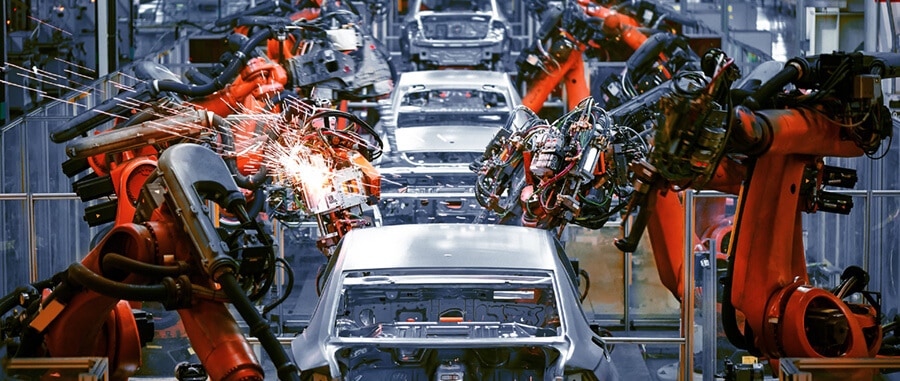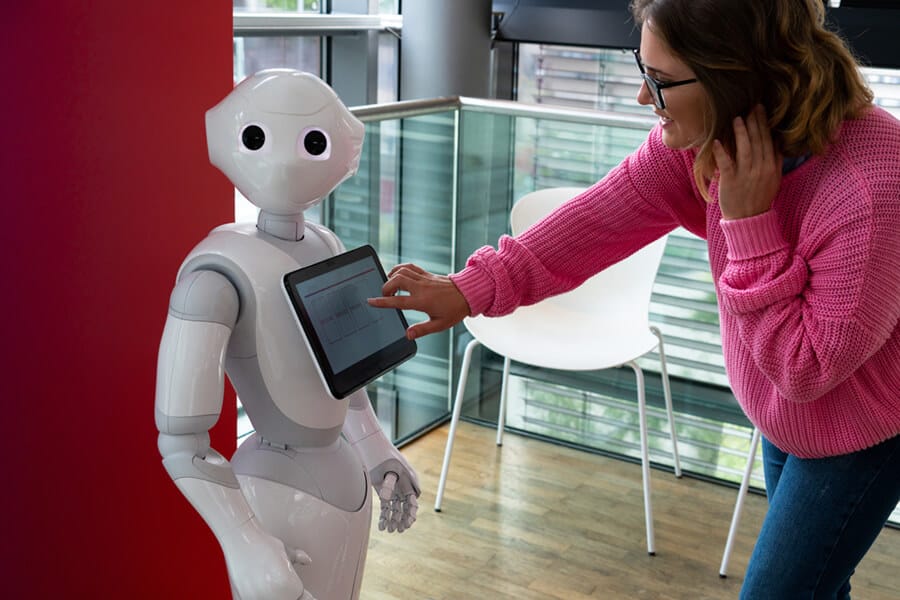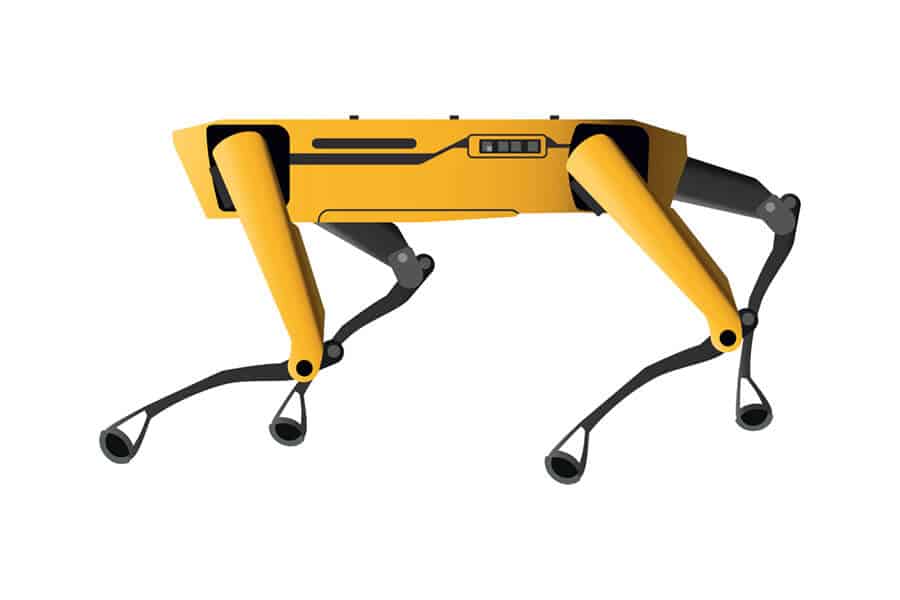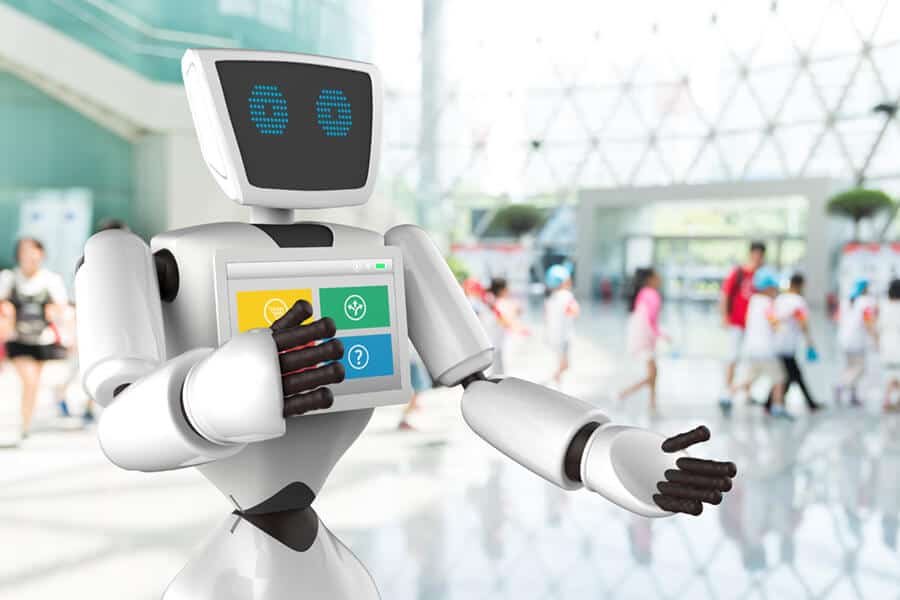Cutting-edge robots help humanity in dangerous or repetitive tasks, research, education, and entertainment. Some of the most advanced technologies in robotics can already be found on construction sites or in people’s homes. But, what are the most advanced robots out there?
Technology progresses so rapidly that sometimes we find ourselves uninterested in the latest phone model, a software update, or any minor upgrades. Robots, however, belong to the branch of technology that incessantly sparks up our curiosity.
Today, robots – both the humanoid androids and industrial robots – are becoming more and more advanced. Most of them are devoted to a specific purpose: helping humanity with education, in space, or on the production line.

Each year, new robots are introduced to the world. Some companies just can’t get enough and keep coming up with great ideas that are likely to soon redefine humanity and become ubiquitous. Here’s some of our favourites:
Robonaut 2
A humanoid robot from NASA and General Motors, Robonaut 2 is an upgrade of the project that started in 2012. This dextrous machine was designed at NASA’s Johnson Space Center in Houston, Texas, and its mission is to help humans explore space.
Robonaut 2 can work hand in hand with other humans or complete missions that are too dangerous for those working in space. Its greatest asset, though, is what NASA engineers call dextrous manipulation – using one’s hand to work. Their challenge was to engineer a robot whose capabilities would go beyond those of humans.
Since 2012, research and testing has been conducted to make the robot agile and strong. The goal for Robonaut 2 is to work on board the International Space Station.
Robonaut 2 is abbreviated to R2, which can be seen as a wink to all-beloved Star Wars droid R2-D2. In contrast to R2-D2, Robonaut 2 is a humanoid, allowing it to take over simple and repetitive tasks. Operations like changing out an air filter are already within the range of Robonaut’s abilities.
This engineering collaboration between NASA and General Motors is a great tool that will soon bring us closer to unveiling the mysteries of the universe. Dear Outer Space, get ready for Robonaut.
Digit
2019’s Digit is bipedal robot from Agility Robotics. Digit is an upgraded version of its already-successful predecessor, Cassie. Both robots follow the same design, yet Digit is equipped in an array of additional functions: an upper torso, hands, sensors, and enhanced computing power.
In comparison to Cassie, Digit has a wider range of movements, which robotic engineers call the Four Degrees Of Freedom (4-DOF). The most important feature is the arms, which expand its capabilities. They help it move around in a human environment – open doors, wave them around to regain balance, or get up after a fall. As well as that, they can be used to carry objects such as parcels.
Digit is still in testing, yet Agility Robotics claim that it can lift up to 18 kilograms and decelerate its fall momentum using its arms. New complex functions, for instance climbing the stairs, open many opportunities to this technology. In the near future, Digit may deliver a package to your door or help workers in warehouses.
Agility Robotics aim to create a robot not exclusively for engineers, one which will be able to walk within minutes after unboxing. It’s a giant leap forward, since Digit’s predecessor – Cassie – was used solely for research.
Pepper

Designed to educate and interact with humans, Pepper is a fully-programmable humanoid robot created by SoftBank Robotics. With its friendly smile and big eyes, Pepper has found it’s place in museums, schools, and many other places.
Introduced in 2014 in Japan, this robot can recognize basic human emotions and faces. It was “optimized for human interaction”, be it through a conversation or with its touch screen.
Pepper is already being used by more than 2,000 companies around the world. It also has 20 degrees of freedom, which make its moves more expressive and natural. Pepper’s speech recognition and dialogue are available in 15 languages. Besides that, it has an open programmable platform to suit its purpose.
120-centimetres tall, Pepper has no sharp edges, which makes it an incredibly amiable and safe robot. Pepper robots have got a multitude of uses: they have found their place in many Japanese homes, performed as cheerleaders along with Spot robots – we will discuss that robot later – and was even used as a hotel receptionist in the UK.
Geminoid
A cutting-edge humanoid robot from Hiroshi Ishiguro Laboratories, Geminoid is just one of the company’s hyper-realistic machines. This android is especially known for its similar appearance to its creator. The robot has 16 degrees of freedom and is operated by an external control system.
The creators of Geminoid asked themselves: “What is human presence?”, and “Can human presence transfer to a remote place?”. Their answer to this question: The Geminoid robots, who are hyper-realistically similar to humans.
Translated literally from Latin, geminoid means ‘like a twin’. Ishiguro’s ambition is to make his robots look as similar to human beings as possible. For more than 20 years he has been conducting his research, making his androids increasingly resemble humans.
The latest Geminoid, also known as Geminoid DK, is by far the most realistic robot from Ishiguro’s Robotics Research Centre. The android was modelled on Henrik Scharfe, a Danish professor. It was developed in 2011 in Denmark and it was also the first Geminoid modelled on a non-Japanese person.
In order to create a Geminoid, Ishiguro makes moulds of the model’s head, hands, and teeth. Geminoid robots look as if they have come straight out of a science fiction film. Professor Ishiguro’s dream of creating a copy of himself turned out to be an incredibly successful project.
Geminoid is a revolutionary android, likely to influence our future if or when technology merges with humanity.
Spot

Pepper’s fellow cheerleader, Spot, is a robot from Boston Dynamics, whose design is often likened to that of a dog. Spot’s advantage over other robots is that it has four legs. They allow him to move through uneven terrains with agility never seen before on a robot. The manufacturers claim that Spot’s unique design grants “safer, more efficient and more predictable operations”.
Spot the robot dog can carry up to 14 kilograms of equipment. It has built-in stereo cameras and is compatible with an app, allowing the user to control Spot wirelessly from afar. With its gargantuan database, it can collect countless amounts of data and information.
This robot uses a 360-degree camera system to scan its surroundings and navigate through obstacles accordingly. The four legs guarantee balance no matter the slope, hindrance, terrain material, including the ability to climb stairs.
Spot is compatible with an array of third-party software as well as hardware. Hence, its owner can integrate this robot with additional equipment or functions. Boston Dynamics also offers the so-called Software Development Kit, which can be used to customize Spot’s functionality and, for example, program it to complete autonomous missions.
The robot dog from Boston Dynamics has a variety of uses too. Spot can be put to work on the construction site, in the oil and gas industry or to help with public safety. This robot is also capable of performing utilities’ inspections, inspect progress in construction, or making tunnel inspections in the mining industry.
Of course, one can use Spot solely for fun, therefore it has found its place in the entertainment industry. As was the case with Robonaut 2, the robot astronaut, Spot can take care of tasks that are too dangerous for humans. Spot robots have a massive potential in a plethora of industries, and its likely to improve the efficacy of many a company.
The Bottom Line
This technology is making constant progress as we’re slowly making our way towards a world we’ve seen in science-fiction films. Contemporary robots have a plethora of uses – from entertainment, through research, to industry. What they all have in common is that their purpose is to help humanity.
The world is soon to experience another breakthrough – robots will most probably live side-by-side with humans. Are our lives going to be easier, or should we prepare for a Terminator-style apocalypse? Judging by Pepper’s friendly smile, the future isn’t heading towards the end of humanity, but rather its unprecedented advancement.
Photos: Shutterstock
Read more about technology here:
Support us!
All your donations will be used to pay the magazine’s journalists and to support the ongoing costs of maintaining the site.
Share this post
Interested in co-operating with us?
We are open to co-operation from writers and businesses alike. You can reach us on our email at [email protected]/[email protected] and we will get back to you as quick as we can.









